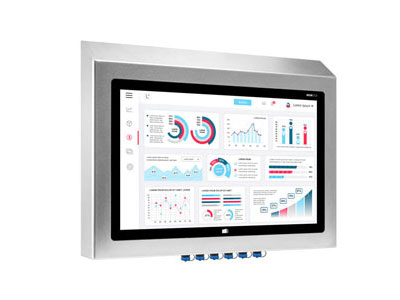Key Takeaway
A PLC is called an industrial computer because it is designed for controlling industrial processes. Unlike regular computers, PLCs are built to handle real-time control tasks in harsh environments. They excel in reliability, ensuring consistent performance even under extreme conditions. PLCs are optimized for precise control, making them ideal for automation in factories. They can manage machinery, assembly lines, and other industrial applications efficiently. While general computers offer flexibility and computational power, PLCs focus on durability and accuracy in industrial settings, making them essential for modern manufacturing.
Definition of PLC
A PLC is essentially a ruggedized computerized device designed to perform control functions in industrial environments. Unlike regular computers, PLCs are built to withstand harsh conditions such as extreme temperatures, humidity, and vibration, commonly found in factories and production floors.

Functionality and Applications
In the realm of industrial automation, Programmable Logic Controllers (PLCs) stand as stalwart guardians of efficiency and precision. Designed to handle repetitive tasks with unwavering accuracy, PLCs are indispensable in environments where consistency and reliability are paramount. Their primary role revolves around controlling machinery, managing production lines, and automating processes that demand faultless execution.
At the core of their functionality lies the ability to seamlessly integrate with various sensors that monitor critical parameters in real-time. These sensors feed data to the PLC, which then processes this information swiftly and decisively. For instance, in a manufacturing setting, a PLC might oversee the intricate dance of robotic arms on an assembly line, ensuring each movement aligns precisely with production requirements. This capability not only enhances productivity but also minimizes errors, thereby optimizing operational efficiency.
Moreover, PLCs excel in their capacity to execute commands swiftly and reliably. When an input signal triggers an action, such as adjusting the speed of a conveyor belt or regulating temperature levels in a furnace, the PLC responds with near-instantaneous precision. This real-time responsiveness is crucial in industries where even slight deviations from operational parameters can have significant repercussions.
Comparison with Industrial PCs
While PLCs serve as stalwarts of real-time control and reliability in industrial settings, Industrial PCs offer a contrasting set of advantages tailored to different operational needs. Unlike PLCs, which prioritize deterministic control over computational prowess, Industrial PCs boast superior processing capabilities suited for complex data analysis and visualization tasks.
Industrial PCs leverage their robust computing power to handle extensive data streams and perform intricate calculations in real-time. This capability proves invaluable in environments where advanced analytics and sophisticated algorithms drive decision-making processes. For example, in a smart factory scenario, an Industrial PC might analyze vast amounts of sensor data to predict maintenance needs or optimize production schedules based on predictive modeling.
Furthermore, Industrial PCs often serve dual roles as both control units and data hubs within industrial automation frameworks. They act as central nodes where data from various PLCs and sensors converge, enabling comprehensive monitoring and management of entire production ecosystems. This holistic approach not only enhances operational visibility but also empowers decision-makers with actionable insights derived from comprehensive data analysis.
In essence, while PLCs and Industrial PCs share a common goal of enhancing industrial automation, their distinct design philosophies cater to different facets of operational requirements. PLCs excel in deterministic control and real-time responsiveness, while Industrial PCs harness computational muscle to drive advanced analytics and strategic decision-making in modern manufacturing environments. Understanding the nuanced strengths of each enables engineers to leverage these technologies effectively, ensuring optimal performance and efficiency in industrial automation applications.
Advantages in Industrial Settings
PLCs, or Programmable Logic Controllers, stand out in industrial automation for their unparalleled robustness and operational reliability. Designed to withstand harsh industrial environments, PLCs excel where traditional relay systems falter. Their hardened construction ensures they can endure extreme temperatures, humidity, vibrations, and electromagnetic interference, making them ideal for diverse industrial applications—from manufacturing plants to energy facilities.
Moreover, PLCs offer operational reliability through redundant components and fail-safe mechanisms that minimize downtime. This reliability is crucial in industries where every minute of production counts. Engineers and maintenance teams rely on PLCs for continuous operation, knowing that these systems rarely fail if maintained correctly. The ability to program PLCs using intuitive languages like ladder logic simplifies troubleshooting and maintenance, ensuring quick response times to operational anomalies.
In essence, the robustness and operational reliability of PLCs not only enhance productivity but also reduce operational risks and maintenance costs, proving indispensable in modern industrial setups.
Historical Context
One of the key advantages of PLCs lies in their modular design, which allows for scalable automation systems. This modular architecture enables businesses to expand their automation infrastructure seamlessly as operations grow or change. Whether adding new production lines, integrating additional sensors, or upgrading software functionalities, PLCs facilitate swift adaptations without requiring extensive overhauls.
Furthermore, the flexibility of PLCs extends to their compatibility with various communication protocols and integration capabilities with other industrial control systems. This interoperability ensures that PLC-based automation systems can communicate effectively across different departments and even between different plants within a global manufacturing network.
For newly joined engineers, understanding the scalability and flexibility of PLCs is essential for planning and executing automation projects efficiently. By leveraging these attributes, businesses can optimize their production processes, respond swiftly to market demands, and maintain a competitive edge in the global industrial landscape.
Conclusion
In conclusion, PLCs serve as the backbone of industrial automation by functioning as specialized computers tailored for real-time control and monitoring tasks. Their role in optimizing productivity, ensuring operational efficiency, and facilitating predictive maintenance underscores their importance in modern manufacturing processes.
By understanding the essence of PLCs as industrial computers, engineers and technicians can harness their capabilities to streamline operations, enhance reliability, and pave the way for smarter, more interconnected industrial ecosystems.
This blog aims to demystify the concept of PLCs, highlighting their critical role in industrial automation while providing practical insights for industry newcomers and seasoned professionals alike. Emphasizing clarity, reliability, and practicality, this content serves as a trustworthy guide in navigating the complexities of PLC technology.
